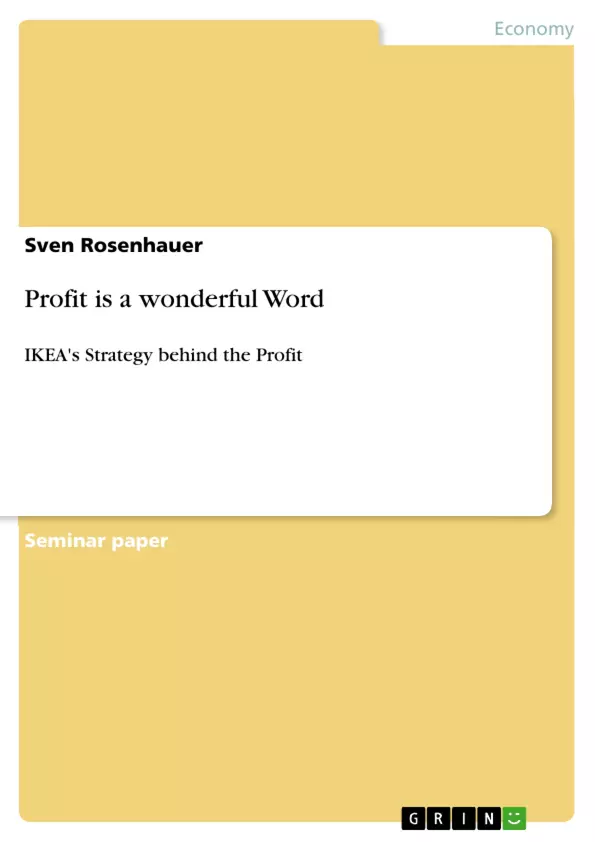In the following research essay, the IKEA organization as a cost-leader with a mixed strategic approach will be analysed. For exposing and identifying the strategy it is important to understand background and history. Therefore, a brief overview will be given. Afterwards, the IKEA way of reducing costs will be described to underline potential strategic positions. Furthermore, key strategic issues, facing IKEA as it seeks to generate and sustain competitive advantages will be identified. In order to analyse IKEA?s strategic position, theoretical frameworks and concepts will be used. Likewise, these frameworks will be critically evaluated in adaptation to the case. Finally, the IKEA strategy will be categorized and a general strategic approach will be highlighted.
Inhaltsverzeichnis (Table of Contents)
- INTRODUCTION
- OVERVIEW OF THE COMPANY IKEA
- Company Profile of IKEA
- History of IKEA
- THE ‘IKEA WAY' - CREATION OF LOW COSTS
- IDENTIFYING THE STRATEGY OF IKEA
- Porter's Five Forces
- Porters' Generic Strategies
- Bowman's Strategic Clock
- Internationalization of IKEA
- IMPLICATION OF THE ANALYSIS
- CONCLUSION
- REFERENCES
Zielsetzung und Themenschwerpunkte (Objectives and Key Themes)
This research essay examines the IKEA organization as a cost-leader with a mixed strategic approach. The paper aims to expose and identify the strategy of IKEA by exploring its background, history, and key strategic issues. This analysis will use theoretical frameworks and concepts to evaluate IKEA's strategic position and highlight its general strategic approach.
- IKEA's cost-leadership strategy
- IKEA's mixed strategic approach
- The IKEA way of reducing costs
- Key strategic issues facing IKEA
- Theoretical frameworks and concepts applied to IKEA's case
Zusammenfassung der Kapitel (Chapter Summaries)
The first chapter provides an overview of IKEA, including its company profile and history. The second chapter focuses on the “IKEA way” of creating low costs, illustrating how IKEA designs, produces, delivers, sells, and buys its products. Chapter three explores IKEA's strategic position, analyzing the company's use of Porter's Five Forces, Porter's Generic Strategies, Bowman's Strategic Clock, and its internationalization strategy.
Schlüsselwörter (Keywords)
Key terms and concepts in this analysis of IKEA's strategy include cost-leadership, mixed strategic approach, Porter's Five Forces, Porter's Generic Strategies, Bowman's Strategic Clock, internationalization, and the “IKEA way”.
- Arbeit zitieren
- Sven Rosenhauer (Autor:in), 2005, Profit is a wonderful Word, München, GRIN Verlag, https://www.grin.com/document/186562



